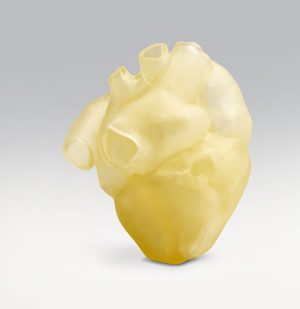Researchers at Rensselaer Polytechnic Institute have developed a way to 3D print living skin, complete with blood vessels. This biomedical advance helps create skin grafts that are adaptable to our existing skin tissue. It promises to be a remarkable advancement in medicine.
“Right now, whatever is available as a clinical product is more like a fancy Band-Aid,” said Pankaj Karande, an associate professor of chemical and biological engineering and member of the Center for Biotechnology and Interdisciplinary Studies (CBIS), who led this research at Rensselaer. “It provides some accelerated wound healing, but eventually it just falls off; it never really integrates with the host cells.”
Kristin Mills, an assistant professor of mechanical engineering at CBIS, says they take a very engineered approach in finding solutions to disease. The Center promotes bio-manufacturing as one of its areas of focus.
“As engineers working to recreate biology, we’ve always appreciated and been aware of the fact that biology is far more complex than the simple systems we make in the lab,” Karande notes. “We were pleasantly surprised to find that, once we start approaching that complexity, biology takes over and starts getting closer and closer to what exists in nature.”
Robust Growth in Bioprinting
The rise of bioprinting is at the center of the wonderment of tissue fabrication. Bioprinting is a niche within 3D printing that is robust and growing.

The Stratasys Digital Anatomy Printer prints realistic human anatomical models that mimic human tissue.
According to the research firm Mordor Intelligence, the global 3D bioprinting market was valued at $385.56 million in 2018. It is expected grow at a compound annual growth rate of 25.36 percent, at least from now to 2024.
Part of this growth is not just in the fabrication of human tissue via 3D bioprinting directly for human use; it is also from fabricating human tissue that can be used in trials, in lieu of animals, in developing drugs.
In their findings, the researchers say 3D bioprinters offer significant advantage for drug testing and clinical trials applications. This will, subsequently, reduce the need for animal trials to consummate much research.
As they explain, in the past, clinical trials for new drug development involved testing on animals with artificially induced affected tissues. On the other hand, 3D bioprinting allows drug developers to conjure more accurate solutions associated with human clinical trials of new drugs by testing them with human-like 3D printed tissues.
Consequently, they are expected to reduce the losses incurred during late-stage failures. The regulatory agency of the United States Food and Drug Administration has already started to consider integrating alternatives for drug safety and efficacy assessment, providing scope for the market.
For example, companies like Organovo (U.S. based) were instrumental in the development of a 3D bioprinter able to develop liver and kidney tissue for drug discovery applications.
“This significant development highlights the vast potential of 3D bioprinting in precision medicine, where solutions can be tailored to specific situations and eventually to individuals,” said Deepak Vashishth, the director of CBIS. “This is a perfect example of how engineers at Rensselaer are solving challenges related to human health.”
The Transformative Effect of Bioprinting

Most recently, researchers from Westchester State University in Pennsylvania, along with the University of Maryland, conducted research on the viability of additive manufacturing in tissue formation. They delved into the shortcomings of the technology but heralded its value.
In their research they explain the intrinsic technicalities in the limitations of bioprinting:
“3D bioprinting has rapidly transformed over the past decade from a niche manufacturing process to a widespread tissue engineering approach.”
They outline ways to improve the process. Summarily, there’s a lesson to be learned from Rensselaer and this last research: The future is becoming the present in biomedical engineering, perhaps faster than previously considered.
3D bioprinting just may be the accelerant that is aiding that rapid evolution. The latter researchers, in their conclusion, said what we, perhaps, should take away with us when we consider the merits of 3D bioprinting and its complexities:
“3D bioprinting has seen rapid growth and widespread adoption in recent years. As continuous progress is made in decreasing printer cost and improving printing techniques, material availability, and reproducibility, the adoption of additive manufacturing to more diverse applications in tissue engineering will only continue to climb.”


Be the first to post a comment.